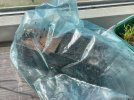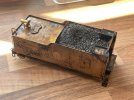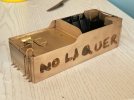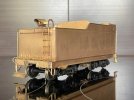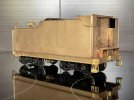I'm pleased you've found a smokebox front, saves the trouble of measuring mine although the holes for the handrail (if that's what they are) look a little odd. Still easier to modify than start from scratch.
As for the cab side - basic measurements as shown above. I can give more detailed measurements or send a copy of the CAD file if required. The four pane window is fixed on the PFM model but would have slid forward on the prototype, and there would have been another sliding window to cover the rear of the opening. The panel in front either had a fixed four pane window or was plated on the inside (as on the PFM model) or on the outside. Check your prototype loco for the detail at the date required. The sunshade measures 31mm long x 5.5mm wide (in the flat) and the armrest sticks out 1.5mm from the cab side.
There weren't many of these available and as far as I know only 233 were produced in 1971 (info from the Brass Guide) so its surprising that two have come up for auction recently. The price of the sold one seems reasonable, until of course you add on the buyers commission ! I paid about the same for mine 30 years ago, but the £ was nearer the $2 mark back then. It just shows the vagaries of the brass market and it depends what's in demand at the time.
They were originally fitted with an open frame motor and I changed mine to a Pittman can motor and made various other modifications including a complete repaint in 'Flying Grande' livery, fitting DCC sound, etc.
There's plenty of prototype photos of these on the Denver Public Library website.

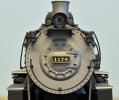
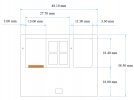
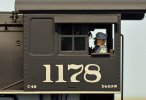
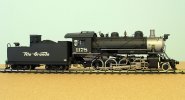

 , given the work planned then you need to do it correctly and get it all off, it'll be near impossible to blend where you've scratched it off with a smooth layer over the top.
, given the work planned then you need to do it correctly and get it all off, it'll be near impossible to blend where you've scratched it off with a smooth layer over the top.
